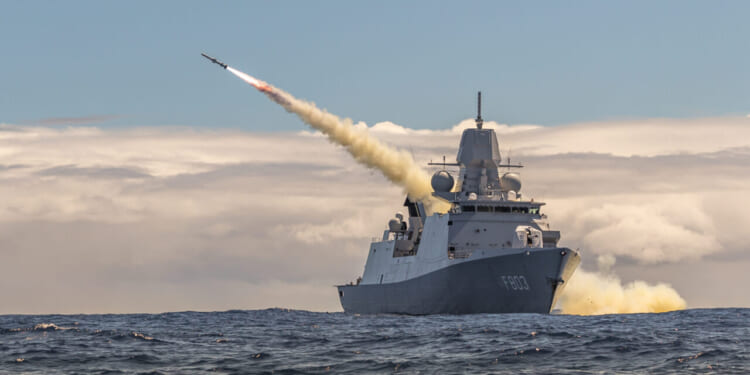Anti-ship missiles are ideal for engaging and sinking enemy warships at relatively large distances.
As China continues to invest billions of dollars into the development of its navy, military planners are taking note.
In a potential clash with China in the Indo-Pacific, the US Navy would have to fend off the Chinese fleet. Although aircraft carriers, aircraft, and submarines would play a main role in the fighting, surface combatants, such as destroyers and cruisers, would also be important.
A Quick Glimpse into the Evolution of Surface Combat
The arrival of the HMS Dreadnought battleship in 1906 changed naval warfare. By that point, wooden warships were obsolete, and the first steel warships were still finding their stride. The Dreadnought-class battleships changed all of that.
With a main armament of heavy 12-inch guns and with several inches of steel armor around the hull and in the gun turrets, battleships could give and withstand a lot of punishment. Little changed in naval technology until the increased development in the field of aviation made battleships obsolete during World War II in favor of the aircraft carrier.
Today, 80 years after the end of the war, aircraft carriers and aircraft continue to control naval warfare. However, surface warships still need to have weapons to attack one another. With engagements taking place beyond visual range, heavy guns like the ones employed by the HMS Dreadnought are out of the question due to their small range. But anti-ship missiles are ideal for engaging and sinking enemy warships at relatively large distances. The US Navy pioneered the development of such munitions with the A/U/RGM-84 Harpoon.
The Harpoon Missile
The A/U/RGM-84 Harpoon is an all-weather, over-the-horizon anti-ship missile. Once fired, the Harpoon skims the water in order to avoid detection and make it harder for air defense systems to intercept it. It uses mid-course guidance with a radar seeker to attack its targets.
The munition has an unclassified range of over 77 miles (67 nautical miles) and carries a 500-lb. blast fragmentation warhead. The munition can be fired from surface combatants, submarines, aircraft, and even coastal defenses, making it an ideal weapon system for intraservice use.
Although the newest versions of Arleigh Burke-class destroyers, the Navy’s main surface combatant, are not using the Harpoon anymore, but are equipped with the Naval Strike Missile, several destroyers of earlier versions (Flight I & Flight II iterations) can carry up to eight RGM-84 Harpoons.
The Navy developed the Harpoon back in the 1970s as its main anti-ship munition for fleet-wide use. The missile made its debut in 1977, and two years later, its air-launched version came into operation.
According to Boeing, over 600 ships, 180 submarines, several different types of aircraft (including the P-3C Orion, B-52H Stratofortress bomber, and F-16 and F-15 fighter jets), and a number of land-based launch vehicles around the world operate versions of the munition.
Boeing is currently working on an even more advanced version of the munition, the Harpoon Block IIU. This version will have new internal hardware, updated software, as well as new fuel to improve performance and lethality.
The anti-ship munition continues to show its relevance in Ukrainian service against the Russian Navy.
About the Author: Stavros Atlamazoglou
Stavros Atlamazoglou is a seasoned defense journalist specializing in special operations and a Hellenic Army veteran (national service with the 575th Marine Battalion and Army HQ). He holds a BA from the Johns Hopkins University and an MA from the Johns Hopkins’ School of Advanced International Studies (SAIS). His work has been featured in Business Insider, Sandboxx, and SOFREP.
Image: DVIDS.


















